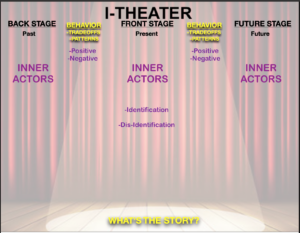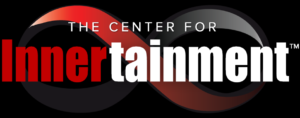24 Aug INNER ACTORS: EXAMPLE #2…SCENE FROM THE MOVIE “WHIPLASH”
MULTIMEDIA: “INNER ACTORS” SCENE FROM THE MOVIE “WHIPLASH”
In this scene from the movie WHIPLASH, the instructor, who leads a prestigious jazz ensemble, is seen interacting with a talented but inexperienced young student during a band rehearsal. There are a number of INNER ACTORS that make up part of the instructor’s personality as well as the student’s personality. These INNER ACTORS influence how the teacher senses, feels, perceives, thinks and behaves at a given point in time, as well as how the student is responding to his teacher and the INNER ACTORS (person parts) that are part of the student’s personality makeup.
Our INNER ACTORS can be said to serve a purpose at the time they were created, and for the situation that we are involved in. What’s important to remember is that whether we understand or “like” our INNER ACTOR, it came into being in order to play a role and serve a purpose at the time of its origin. THIS PURPOSE WAS TO ESTABLISH A SENSE OF POWER AND CONTROL IN A CHALLENGING SITUATION.
In this film clip from the movie WHIPLASH, the instructor is dealing with his own personal needs, motivation and drive for excellence and perfection. His reputation, and therefore his display of control represented by the artistry and mastery that his ensemble displays, is at stake. The instructor’s INNER ACTORS are “triggered” automatically and function to cope in his way, with the current situation, even if it’s not the behavior that is typically accepted by others in the same situation. The teacher’s INNER ACTORS demonstrate a series of responses ending in a RE-ACTIVE personality part, not truly under his conscious control.
When we’re watching a film, we can IDENTIFY with the character’s INNER ACTORS or DIS-IDENTIFY with them, depending on our own individual differences and past experiences. For example, if someone is raised in an abusive family, with an alcoholic parent, they may be exposed over a long period of time, to the parent’s INNER ACTORS that are erratic, abusive and unpredictable. This kind of family situation can force a child to adapt to these levels of unpredictability in ways that determine which INNER ACTORS they develop, for the sake of their security or control at the time. The TRADEOFFS we make along our life path in coping and compensation, are derived from our consistent interactions with the positive and negative Circles of Influence that surround us. These TRADEOFFS can often lead to life long PATTERNS of behavior where the INNER ACTORS in each of the family members, remain automatic and unconscious, and yet continue to create future PATTERNS of either positive and negative behavior in the family dynamic.
I-THEATER

SPOTLIGHT
WE IDENTIFY AND DIS-IDENTIFY WITH CHARACTERS IN FILMS AS A RESULT OF OUR OWN PERSONALITY CHARACTERISTICS AND PAST EXPERIENCES. WHEN WE IDENTIFY, WE CONNECT AND INTERNALIZE AN ASPECT, PROPERTY OR ATTRIBUTE OF ANOTHER. WHEN WE DIS-IDENTIFY, WE REJECT SOMETHING ABOUT THE CHARACTER, OFTEN TIMES BECAUSE IT CONFLICTS WITH OUR OWN INNER ACTORS OR QUITE POSSIBLY BECAUSE IT HAS IT’S OWN DEEPER RELATIONSHIP TO OUR OWN PAST.
ELEVATION
WHEN YOU BEGIN TO BECOME MORE AWARE OF YOUR OWN INNER ACTORS, YOU ARE ON THE PATH TO DISCOVERING THE POTENTIAL FOR INTEGRATING THIS AWARENESS OF PERSONALITY PARTS INTO HIGHER AND HIGHER LEVELS OF FREEDOM AND WELL BEING. WE ALL HAVE INNER ACTORS THAT REMAIN UNCONSCIOUS AND HIDDEN IN OUR BACK STAGE. WHEN WE CAN RECOGNIZE THEIR VALUE, WE HAVE AN ADVANTAGE AND A TOOL TO CREATE A MORE SUCCESSFUL FUTURE.
